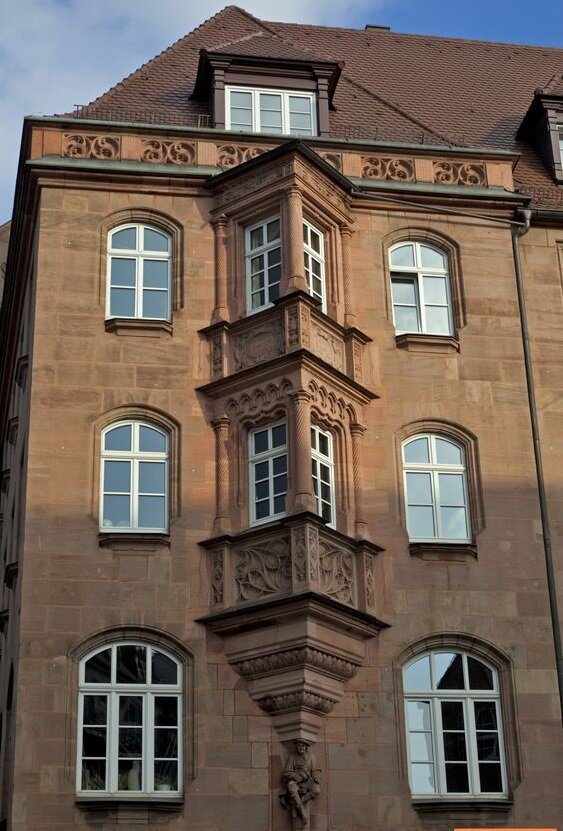#16379. Historic Façade with Bay Windows: German Classicism in Sandstone

This is an expressive example of classical German architecture, showcasing an elegant stone façade with rich decorative elements. The building is constructed from sandstone with a warm brownish hue, which gives it monumentality and solidity. The architectural composition of the façade is organized around the central bay window, which serves as the dominant feature of the entire composition.
The façade features a thoughtfully designed hierarchy of decorative elements. Particularly noteworthy are the cantilevered bay windows protruding at different levels, creating an interesting play of volumes and shadows. The window openings are designed in an arched style on the ground floor and have a rectangular shape on the upper floors, framed with light-colored frames that create an expressive contrast with the dark stone of the façade.
At the top of the building, one can notice a thin decorative band with ornamental motifs, as well as a mansard roof with tile covering. The bay windows are adorned with relief details and stone carvings, indicating a high level of craftsmanship. When designing a modern façade, similar protruding elements can be adapted to create an interesting play of light and shadow even in minimalist design.
This approach to façade organization demonstrates how architectural volumes can be used to give a building character and expressiveness without overloading it with excessive decoration. Bay windows not only decorate the façade but also expand the interior space of the rooms, making them brighter and more spacious.